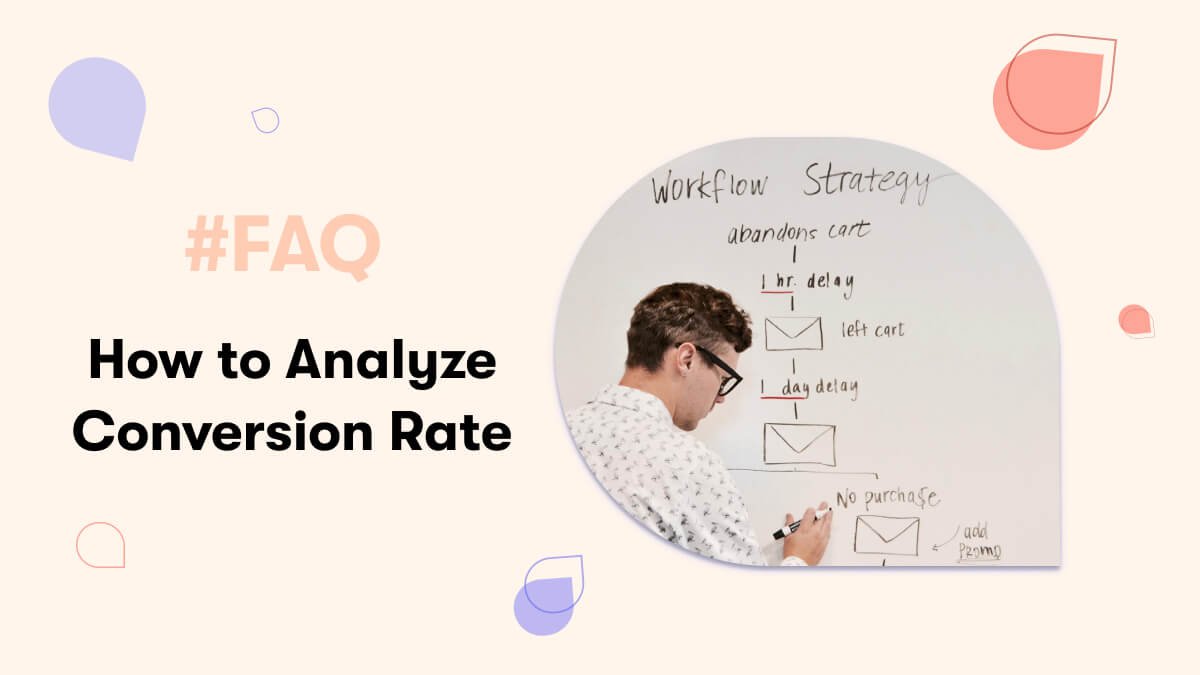How Do You Analyze Conversion Rate?
What are the different types of conversion rate? And how do you analyze them all? Here's a post that will teach you how to just that.
Updated November 28, 2023.

Analyzing the conversion rate of your website can be done in a few different ways and using a few different tools. It all depends on the type of business you have. For eCommerce CRO the only conversions that really matter are purchases while for SaaS businesses a lead might be considered a conversion.
But before we dive into the details, let's first clarify what is considered a conversion so that you can calculate this more effectively.
What is considered a conversion?
First and foremost, a conversion is defined differently for each business. For example, for eCommerce stores, a conversion is most commonly an actual purchase, but not in all cases. Sometimes the desired conversion is a visitor to lead, when a visitor puts in their email address. Other websites may consider a new chat engagement or a phone call as a conversion.
The primary conversion should be whatever you consider to be the most desired action that you want the visitor to take during their browsing journey.
For example, let's assume your desired conversion is a purchase and you have an eCommerce store that is hosted on Shopify.
There are 2 common ways to calculate conversion rate.
- Conversion rate by session
- Conversion rate by user
Let's dive into the differences and how they each work.
Conversion rate by session
Conversion rate by session is a simple calculation that takes the total # of conversions over a specific time frame and divides that value over the total # of website sessions during that same time frame. It does not consider whether or not the same visitor performed multiple repeat sessions.
Conversion rate by user
Conversion rate by user is a bit more complex calculation (not for you but for the tools you use), that takes the total # of conversions over a specific time frame that is generated by a fixed group of users.
For example, let's say 100 visitors come to your eCommerce store on a Tuesday.
Using the conversion rate by user calculation, the primary question will focus on those 100 visitors (and their IP addresses and other cookie data) and whether or not they end up performing the desired action.
The number of sessions that were required to perform the purchase is irrelevant in this case.
And so the calculation in common language would be "how many people from this specific list of website visitors ended up buying something?".
Most online tools will consider conversion rate by session - simply because it's an easier calculation to perform.
It's difficult to store cookie data and use it accurately on your own which is why we use tools to calculate the conversion rate.
Now let's briefly cover the most common tools that you'd use to check these calculations.
- Shopify (if you have an eCommerce store)
- Google Analytics
How to analyze conversion rate on Shopify
Shopify has a great dashboard with all the metrics you need to calculate your conversion rate. Most commonly, it's found on the 2nd row of metrics on the left-hand side.
The conversion rate should show in a percentage format, which suggests what percentage of sessions on your website turned into actual purchases. With Shopify, the calculation is based on conversion by sessions, rather than conversion by users.
How to analyze conversion rate with Google Analytics
With Google Analytics, you can check conversion rate in many ways and can check both conversion rate by users and conversion rate by sessions.
Without some more advanced tweaking, the easiest way to calculate this is by looking at the total # of unique visitors during a timeframe and then dividing that by the total # of conversions over that same time frame.
Over time, if you're not making drastic changes to your website, this should give you an idea of the conversion rate by user.
It's still not 100% accurate because the total number of total conversions during that time frame may or may not be conversions from the same unique visitors that visited the website. Nonetheless, this is a far more accurate and better way of calculating conversion rate than based on sessions alone.






